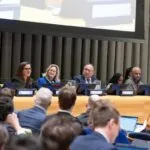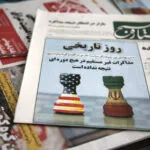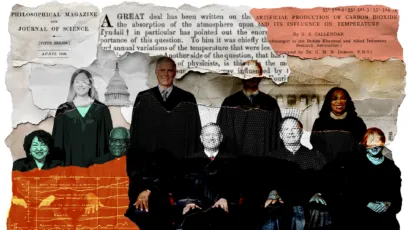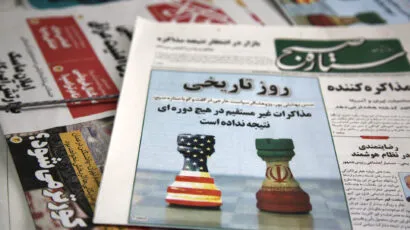International humanitarian law and nuclear weapons: Irreconcilable differences
By Dean Granoff, Jonathan Granoff | December 15, 2011
There are more than 22,000 nuclear weapons in existence today, and their destructive capacity is of a magnitude that dwarfs imagination. Most deployed nuclear weapons would detonate with a force more than 10 times that of the bomb dropped on Hiroshima, and some would be hundreds of times more destructive. Experts agree that even a limited exchange of, say, 100 nuclear weapons, a fraction of the world’s stockpile, could devastate the global climate and trigger widespread famine, resulting in a cascade of horrific consequences.
International law is central to efforts to effectively control, constrain, and eliminate nuclear weapons. The final statement of the 2010 Nuclear Non-Proliferation Treaty Review Conference highlighted the importance of the legal obligations of parties by stating that the conference “expresses its deep concern at the catastrophic consequences of any use of nuclear weapons and reaffirms the need for all States at all times to comply with applicable international law, including international humanitarian law.” This explicit recognition heightened the significance of a body of law that actively guides the world’s militaries in all areas of conventional weapons use and is referred to as the law of armed conflict, the law of war, jus in bello, or international humanitarian law — terms that are generally synonymous. This body of law defines the legal boundaries of the uses of weapons and is designed to protect innocent parties and curtail unnecessary suffering.
Just prior to the 2010 Review Conference, the International Committee of the Red Cross declared the essential incompatibility of nuclear weapons with humanitarian law and values, and drew the logical conclusion that “preventing the use of nuclear weapons requires fulfillment of existing obligations to pursue negotiations aimed at prohibiting and completely eliminating such weapons through a legally binding international treaty.” This call to action is consistent with the 1996 advisory opinion of the International Court of Justice when it addressed the legality of the threat or use of nuclear weapons. The court highlighted that the use of nuclear weapons is “scarcely reconcilable” with the requirements of international humanitarian law and concluded that there “exists an obligation to pursue in good faith and bring to a conclusion negotiations leading to nuclear disarmament in all aspects under strict and effective international control.”
It is therefore important to understand the basic elements and implications of international humanitarian law. An analysis of actual nuclear weapons practices — including contemplated uses as expressed in national mission statements, war plans, scenarios, and options — shows that they fall short of international humanitarian law standards and Nuclear Non-Proliferation Treaty commitments to comply with this law. The most fundamental policy implication of this analysis is that states possessing nuclear weapons should make immediate changes to missions, deployments, and targeting policies and practices to prevent a use that would violate international humanitarian law or would thwart the speedy fulfillment of a treaty obligation to achieve the global elimination of nuclear weapons through good-faith negotiations. Not only does international law preclude the use of nuclear weapons, but it also precludes threats to use nuclear weapons, which are often expressed in statements such as “all options are on the table.” Nuclear weapon states must promptly take illegal options off both the table and the menu.
The rules of war. At the core of international humanitarian law — as defined by the International Court of Justice and codified by “Hague Law” and “Geneva Law” — are a number of rules that define acceptable military conduct. Based on military manuals from various countries, the rules can be summarized as follows:
- Rule of distinction prohibits the use of a weapon that cannot discriminate in its effects between military and civilian targets. This law recognizes that the use of a particular weapon against a military target may cause unintended collateral or incidental damage to civilians and objects and permits such damage, subject to compliance with the other applicable rules of law, including the rule of proportionality. However, the weapon must have been intended for — and capable of being controlled and directed against — a specific military target, and the civilian damage must have been unintended.
- Rule of proportionality prohibits the use of a weapon if its probable effects upon noncombatant persons or objects would likely be disproportionate to the achievement of a specific, legitimate military objective.
- Rule of necessity provides that in conducting a military operation, a state may use only such a level of force against its adversary as is “necessary” or “imperatively necessary” to achieve its military objective, and that any additional level of force is unlawful.
- Corollary requirement of controllability means that the rules of distinction, proportionality, and necessity prohibit the use of weapons whose effects cannot be controlled by the user.
- Belligerent reprisal provides that a state may not engage in even limited violations of the law of armed conflict, even in response to an adversary’s violation of such law, unless such acts of reprisal obey the rules of necessity and proportionality and are solely intended and executed to get the adversary to adhere to the law of armed conflict. The reprisal must be necessary to achieve that purpose and proportionate to the violation against which it is directed.
- Self-defense means that the inherent right of states is subject to constraints imposed by the Charter of the United Nations.
The full contents of this article are available in the November/December issue of the Bulletin of the Atomic Scientists and can be found here.
Together, we make the world safer.
The Bulletin elevates expert voices above the noise. But as an independent nonprofit organization, our operations depend on the support of readers like you. Help us continue to deliver quality journalism that holds leaders accountable. Your support of our work at any level is important. In return, we promise our coverage will be understandable, influential, vigilant, solution-oriented, and fair-minded. Together we can make a difference.
Topics: Nuclear Weapons, Opinion















